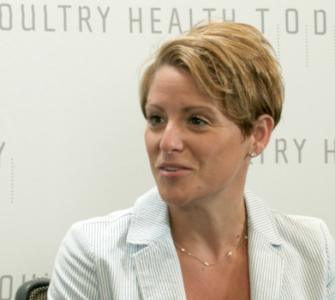Campylobacter control – Part 3: Practical considerations for controlling Campylobacter
Blending two commonly used antibacterial treatments could help processing facilities take better control of Campylobacter and reduce the risk of food-borne illnesses, according to scientists.
Researchers at Colorado State University found that using a combination of peroxyacetic acid (PAA) and low-pH buffered sulfuric acid is significantly more effective at tackling Campylobacter than using either treatment alone.
And they said timing the treatment so it is used after birds are cut up means that reductions in bacterial load could last even longer than when compounds are used individually.
Speaking to Poultry Health Today, Keith Belk, PhD, head of the animal science department, said with no vaccines available to control Campylobacter on the farm, the current focus for tackling the pathogen has to be in processing.
Watch the full interview or each part separately
Treatment blend offers ‘exciting potential’ for Campylobacter control at processing
Campylobacter control – Part 1: Still much to learn about Campylobacter
Campylobacter control – Part 2: Research on controlling Campylobacter
Campylobacter control – Part 3: Practical considerations for controlling Campylobacter
Posted on September 3, 2020
















